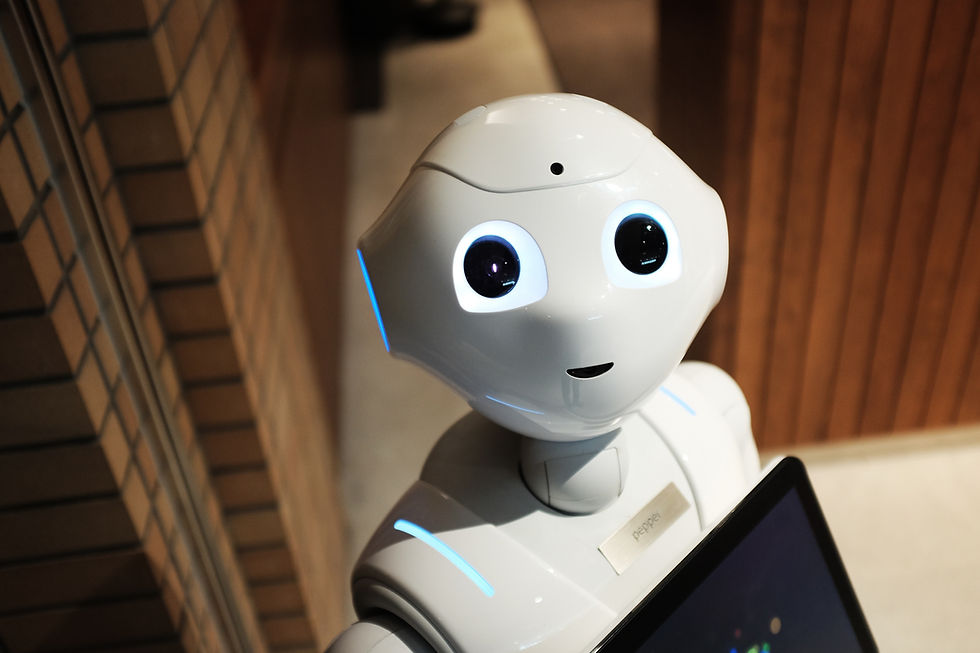AI Doesn’t Have to Replace You: How It Can Become Your Greatest Productivity Tool
- Heather K. Piper

- May 1
- 4 min read

Artificial intelligence (AI) often comes with headlines about automation and job displacement, making many professionals anxious. The truth is far more empowering: AI doesn’t have to replace you—it can enhance your abilities, streamline workflows, and make you more productive than ever before. When approached strategically, AI becomes less a threat and more a tool to amplify your strengths, save time, and focus on higher-value work.
This article explores how AI can be integrated into daily work routines, how to use it responsibly, and why embracing it can unlock new levels of personal and organizational productivity.
1. Shift Your Mindset: AI as a Partner, Not a Replacement
The first step in harnessing AI is a mindset shift. Instead of fearing automation, consider AI as a partner that handles repetitive, time-consuming tasks, giving you more space to focus on creative, strategic, or interpersonal work.
Automation vs. augmentation: AI can automate routine data entry, scheduling, and reporting—but it thrives when paired with human oversight. Humans provide judgment, context, and intuition, areas AI cannot replicate.
Time leverage: Tasks that would take hours can be completed in minutes with AI, freeing time for planning, analysis, or innovation.
Enhanced creativity: AI can generate ideas, draft content, or suggest solutions, but humans shape, refine, and implement them.
Example: A marketing professional can use AI to draft a blog post, but their expertise ensures the messaging aligns with the brand voice and target audience.
2. Identify Tasks Where AI Can Boost Productivity
To maximize AI’s potential, start by identifying areas where it can save time or increase efficiency:
Repetitive administrative work: Scheduling, email sorting, and invoice processing can be automated. Tools like Calendly or x.ai streamline appointments, while AI-powered inbox tools prioritize urgent messages.
Data analysis: AI can quickly analyze datasets, generate insights, or create visual reports that would take humans hours to compile. Tools like Tableau with AI integration or Microsoft’s Power BI help translate raw data into actionable insights.
Content creation: AI can draft emails, social media posts, presentations, or creative copy, providing a foundation for human refinement.
By pinpointing tasks that are repetitive, time-intensive, or highly structured, you can free your energy for activities that truly require human intelligence.
3. Use AI to Enhance Decision-Making
AI excels at processing large amounts of data quickly and identifying trends that might go unnoticed. This makes it an invaluable decision-support tool.
Forecasting and predictions: Machine learning models can predict sales trends, customer behavior, or market fluctuations.
Scenario analysis: AI can simulate multiple scenarios, helping decision-makers assess potential outcomes before committing to a course of action.
Personalized recommendations: AI tools can suggest priorities, highlight opportunities, or flag risks based on historical data.
Example: Financial advisors use AI to analyze client portfolios, identify investment opportunities, and mitigate risks, allowing them to focus on strategy and personalized advice.
4. Combine AI With Your Human Skills
AI amplifies what humans already do best. Rather than replacing intuition, judgment, or creativity, it enhances these abilities:
Creativity: AI can generate initial drafts, design concepts, or brainstorm ideas, but humans refine them with context, emotion, and storytelling.
Problem-solving: AI can provide multiple solutions or highlight patterns, while humans decide which approach best fits organizational goals.
Collaboration: AI can handle repetitive coordination tasks, leaving humans to focus on relationship-building, negotiation, and mentorship.
Example: Designers use AI to generate hundreds of mockups quickly. They then select and refine the most compelling designs, combining AI speed with human creativity.
5. Integrate AI Gradually and Strategically
AI is most effective when implemented thoughtfully. A gradual, strategic approach reduces overwhelm and maximizes benefits:
Start small: Pick one workflow or task to improve with AI.
Test and iterate: Evaluate efficiency gains and refine processes.
Scale: Expand AI use to additional tasks as you gain confidence.
Train teams: Educate colleagues about AI tools, ensuring consistent and ethical adoption.
Example: A company might begin with AI-driven meeting summaries, then expand to automated reporting, predictive analytics, and content generation as teams become comfortable.
6. Understand AI Limitations
While AI is powerful, it’s not a silver bullet. Awareness of its limitations ensures responsible use:
AI can produce errors or biased outputs, so human verification is essential.
AI lacks emotional intelligence and ethical judgment, which are critical for decision-making.
Overreliance on AI can reduce skill development and creativity—use it to support, not replace, human effort.
Tip: Always combine AI insights with human judgment and domain expertise.
7. Leverage AI for Personal Productivity
Beyond work tasks, AI can also improve personal productivity:
Time management: AI tools can schedule your day, suggest optimal work periods, or block distractions.
Learning and development: AI-powered platforms can summarize articles, recommend courses, or provide skill assessments.
Information management: Tools like AI note-takers and summarizers reduce cognitive load, allowing you to focus on understanding and applying knowledge.
Example: Students and professionals use AI summarizers to condense long research papers or training materials, saving hours of reading time while retaining key insights.
8. Build a Mindset of Continuous Learning
The AI landscape evolves rapidly. To maximize its benefits:
Stay updated on new tools and best practices.
Experiment regularly to discover efficiencies.
Share lessons learned with peers and teams.
Continuous learning ensures AI remains a productivity booster rather than a source of overwhelm.
Closing Thought
AI doesn’t have to replace you—it can amplify your capabilities, streamline workflows, and free you to focus on high-value work. By shifting your mindset, identifying tasks to automate, integrating AI thoughtfully, and combining its capabilities with human skills, you can transform how you work.
The future of productivity is not AI versus humans—it’s AI with humans, working together to achieve more in less time, with greater creativity, and smarter decision-making.







Comments